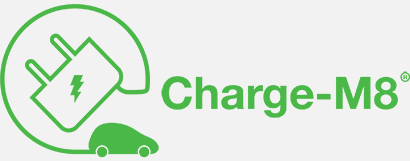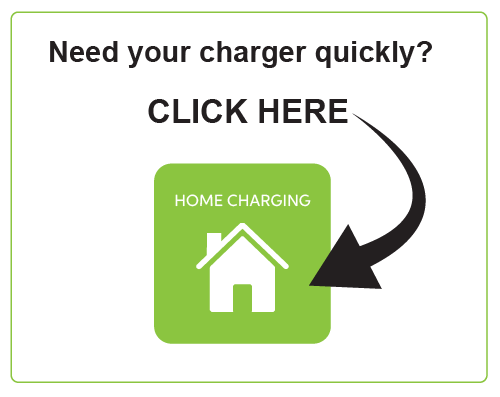


You can either call our friendly team who will be delighted to support you. Or simply click on the home charging tile below to take our easy, quick home survey.
With a fantastic range of chargers for all needs, from the budget conscious to the style focused, we have the right charger for you. CLICK HERE to see the options
We understand it can be slightly confusing when looking at all the different charger features. Whilst we are only a phone call away should you want to talk through it, we have also created some information highlighting the main considerations that should help narrow your choices.



When looking at our range of chargers, it is worth considering whether a socketed or tethered charger is best for you. Below are the benefits of each type:
Tethered This is considered to be more convenient when charging as the cable is attached and ready to go meaning there is only one end to plug in.
Socketed - This can look aesthetically better when the charger is not in use as there is no trailing cable visible. That said, some chargers such as Hypervolt allow the cable to be neatly wrapped around the unit's body.
Another key benefit of this type of charger is future proofing. Cable plug ends can become damaged if dropped or accidentally driven over. If the unit was tethered, it might require a completely new charger which will also likely warrant an engineer visit resulting in greater costs. Conversely, with a socketed charger, it will be a simple replacement of the lead.

Whether you live in a modern apartment or a quintessential English country estate, we have a range of chargers that will look perfect when fitted to your house.
Simple
The simple affordable stylings of the Ohme ePod make it the top choice for many homeowners. It is a compact little unit with a fantastic range of features but mainly boasts of clever tech that allows you to utilise a special EV tariff with Octopus energy. This allows users to charge at the cheapest possible rate of around 7p per kWh. Other charging units with a functional, simple design include:
| Ohme Home Pro | EO Mini Pro 3 | Wallbox Pulsar |
| Zaptec Go | Indra Smart Pro |
Modern / Futuristic
If you want to impress your family and neighbours with something that looks futuristic, then the Hypervolt has a great look. With its large glowing electrical symbol on the front and a halo of light around the charger body, it looks superb on the wall. Two other chargers you may wish to consider are:
| Easee | indra Smart Lux |
Stylish
If you want something more stylish and unique, then the Simpson and Partners Home 7 is for you. The beautiful design and options for choosing colours and finishes will ensure it doesn’t look out of place on your heritage home.


You can either call our friendly team who will be delighted to support you. Or simply click on the home charging tile below to take our easy, quick home survey.
With a fantastic range of chargers for all needs, from the budget conscious to the style focused, we have the right charger for you. CLICK HERE to see the options

Having Charger Confusion?
We understand it can be a little confusing when looking at all the different chargers and features. Whilst we are only a phone call away should you want to talk about it, we have also created some information highlighting the main considerations which should help to narrow your choices.
 When looking at our range of chargers it is worth considering whether a socketed or tethered charger is best for you. Below are the benefits of each type
When looking at our range of chargers it is worth considering whether a socketed or tethered charger is best for you. Below are the benefits of each type
Tethered -This is considered to be more convenient when charging as the cable is attached and ready to go meaning their is only one end to plug in.
Socketed-This can look aesthetically better when the charger is not in use as their is no trailing cable visible. That said, some chargers such as Hypervolt allow the cable to be neatly wrapped around the body of the unit.
Another key benefit of this type of charger is future proofing. Cable plug ends can become damaged if dropped or accidently driven over. If the unit was tethered it may require a complete new charger which will also likely warrant an engineer visit resulting in greater costs. Conversely, with a socketed charger it will be a simple replacement of the lead.
Charge-m8® Home Charge Scheme Test
Where indicated, Charge-m8 EV chargers are approved by the Office for Zero Emission Vehicles (OZEV) and eligible for a government grant towards the installation costs of an EV Home Charger for electric & Hybrid vehicles, whether new or second-hand. The Homecharge Scheme (EVHS) Eligibility criteria for the OZEV grant changed on 31st March 2022. The grant will no longer be available to homeowners living in single-unit properties.
Also known as Electric Vehicle Homecharge Scheme (EVHS), the grant provides 75% of the purchase & installation cost of a new home EV charging point up to a maximum of £350 for qualifying vehicles, subject to the following criteria:
Grant eligibility
A customer will qualify for grant funding under the OZEV scheme if they have a qualifying vehicle and property as detailed below. If you rent your home, flat/apartment or own your own flat/apartment you are likely to be able to claim the EVHS grant from the 1st April 2022 (subject to eligibity and verification). If you own your own single unit home you will not qualify for the EVHS grant from the 1st April 2022.
Charge-m8 cannot provide bespoke advice on eligibility online. Please fill in the Order-Enquiry and a member of the Charge-m8 team will contact you to discuss your individual circumstances and check if you qualify for the grant scheme.
If you live in Scotland, additional funding may be available from the Scottish Government via the Energy Saving Trust.
Vehicle ownership requirements
The following customers are eligible to access the grant:
- individuals who become registered keepers of a new or second-hand eligible electric vehicle – note that the registered keeper is not necessarily the owner of a vehicle, but the person responsible for the car that pays for road tax and MOT
- individuals who are assigned a company car for at least 6 months
- individuals who lease an eligible vehicle for at least 6 months
- individuals who lease an eligible electric vehicle through a salary sacrifice scheme
- individuals who are named, by their employer, as the primary user of an eligible electric vehicle for at least 6 months
- individuals who have ordered an eligible electric vehicle
In all cases, the customer must be able to provide evidence that they qualify under one of the above categories. The evidence required is described under documents required.
Vehicle leases
For short-term leases that roll month on month, the Driver and Vehicle Licensing Agency (DVLA) will accept a claim once a person has had the lease for at least 6 months and can evidence this.
If a chargepoint is bundled in with a vehicle lease, the following requirements must be met:
- the customer must have a qualifying vehicle
- the installation must take place at the customer’s place of residence (which must have off-street parking as per our dedicated off-street parking requirements)
the lease agreement must clearly:
- state the customer will be the owner of the chargepoint once payment is complete
- itemise the cost to the customer of the chargepoint and its installation (including any applicable VAT) – this is the amount that a grant may be offset against
- ensure the warranty for the chargepoint meets the EVHS requirements
- ensure any associated vehicle lease is for at least 6 months
- a copy of the lease agreement must be submitted to DVLA with the application so that the above can be verified
Eligible vehicles
To be eligible for the grant, the vehicle must be listed on the EVHS eligible vehicles list at the time of installation. The list includes battery-powered and plug-in electric cars, vans, taxis and motorcycles.
If a vehicle or model is not listed, it is not eligible for grant.
Vehicles are listed at the request of their manufacturers. If your vehicle is not present, contact the manufacturer of the vehicle to confirm why it is not listed.
Property requirements
This grant is for domestic properties only (for workplaces, refer to OZEV’s Workplace Charging Scheme).
The grant is only for retrofit (existing) properties; it cannot be used for new-builds or properties that are not occupied.
The customer must be resident at the property. This will be checked via vehicle registration details. Where the link between the customer and the property is unclear, additional supporting evidence may be required (for example, a utility bill).
Any necessary third-party permissions (such as from a freeholder or managing agent of a block of flats) must be obtained by the customer before an installation occurs. This will be needed for rented or leasehold properties where it’s the renter or the leaseholder applying.
Where an installation requires cabling or other parts of the installation to be placed in or on another person’s property, or public land, access rights and permissions must be agreed by all parties using legally binding arrangements, such as legal covenants, before an installation begins.
There is no requirement to inform OZEV if you are moving a chargepoint to a new house or if you move house.
Dedicated off-street parking
The customer’s property must have designated, private off-street parking. This may be co-located with the property or separate from it. Where the parking is separate, the customer must be able to demonstrate that they have a legal entitlement to the parking space through the provision of land registry title deeds.
The grant is not available where the customer does not own the parking or have sole legal right to it. This includes:
- rented spaces
- spaces shared with other properties
- spaces that provide access routes to other properties
The parking must be suitable for a chargepoint installation (a survey before installation must be conducted by the installer). The parking must be able to permit an eligible vehicle to be charged safely. The customer must be able to access the parking space at all times.
If you do not have off-street parking, OZEV have a grant scheme for on-street residential charging that can be taken up by your local authority.
We are not able to permit arrangements that involve cables being placed over public land, such as pavements, even if it is temporary.
Installers are expected to determine if the parking will permit an eligible vehicle to be charged safely. OZEV will not intervene in any negative assessment made by an installer.
You can claim one charging point per eligible vehicle and up to two charging points per household. More information on the OZEV Scheme can viewed online here.




